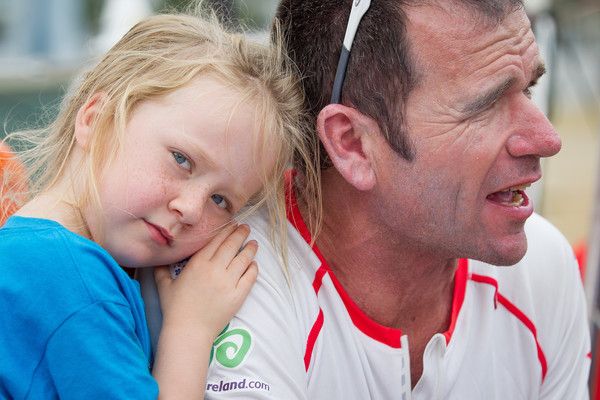
The Coast Guards call to stand-down and suspend any offshore racing outside San Francisco Bay in the wake of last months tragedy in the Farallons Race has rankled some Bay area sailors. Critics decry the move as draconian, driven by overzealous safety mavens, an example virulent government intrusion, trampling of personal freedoms, etc., etc., etc. It is a familiar rant, and not without merit in some cases. Not in this one.
According to the Coast Guard, the stand-down request would be lifted in a matter of weeks. It affects only offshore races, not those within the bay. The pause was meant to an allow an opportunity for the Coast Guard, sailing safety experts, and the local race organizers to review their offshore race courses and safety guidelines. The suspension directly impacted the Singlehanded Sailing Societys Singlehanded Race to the Farallones, which was gamely renamed the Stand Down Regatta and re-routed last weekend to stay within the bay.
Accidents such as the one in the Farallons Race are preventable. The Sydney 38 Low Speed Chase was caught inside a huge wave set that broke on the underwater shelf extending from South Farallon Island, eventually washing all but one member of the eight-person crew into the water. Nick Voss, who stayed with the boat until it was driven onto the islands rocky shore, along with two others who escaped the crushing surf, Bryan Chong and James Bradford, were the only survivors. The local sailing publication Latitude 38 pointed to one possible fix: Locate a rounding mark around the Farallones Islands in deeper water to ensure racers don’t ever suffer the same fate as Low Speed Chase. Certainly, this could have been accomplished without suspending racing, but Im not entirely opposed to hitting the pause button for further reflection.
US Sailing has assembled a team of experts to investigate the accident, and it hopes to have findings and recommendations released to the public in June. The four-member independent review panel and panel advisors include three past contributors to Practical Sailor. Jim Corenman, developer of the popular HF radio messaging program Airmail is one of the four panelists. Past PS contributor Dr. Michael Jacobs, author of A Comprehensive Guide to Marine Medicine, is one of two medical advisors. Sailing writer and two-time circumnavigator Evans Starzinger, is the Offshore Special Regulations Consultant.
Other panelists include Sally Honey, two-time yachtswoman of the year; John Craig, the highly respected race director at San Francisco’s St. Francis Yacht Club, principal race officer for the 34th America’s Cup and member of US Sailings Board of Directors; and Bartz Schneider, a successful racing sailor and principal race officer for the San Francisco Yacht Clubs popular Leukemia Cup races. Jim Wildey, chief of the materials laboratory at the National Transportation Safety Board, will advise on investigation procedure and formats. US Sailings Safety at Sea Committee Chairman Chuck Hawley will serve as a Review Panel Liaison.
It is my hope that this line-up of experts, along with other important changes in the investigative process, will ensure that the Farallones report will set a new standard for US Sailings accident investigations.Earlier this year, PS published a critical analysis of US Sailing’s investigation of fatalities in the 2011 Chicago-Mackinac race.
While I can understand why some Bay Area sailors would be bent out of shape over the Coast Guards decision, it is important to keep things in perspective. The stakes are far greater than they appear. In his first-hand account of the accident, survivor Bryan Chong described how fortunate he feels to be able to see his wife and eight-week old daughter again. A similar point was driven home to me this week in Miami, as I watched racers in this years Volvo Ocean Race embrace their wives, young sons, and daughters after 17 days at sea. Amidst the smiles and tears and laughter of these families being reunited, the “world’s greatest ocean race” suddenly seemed pretty small and unimportant.

































